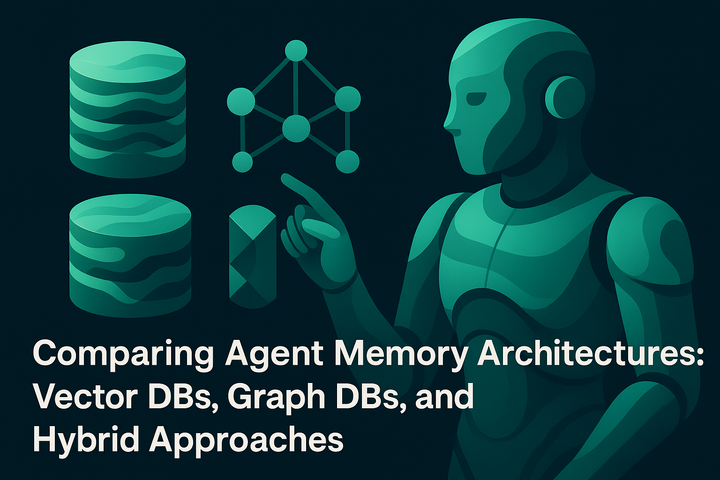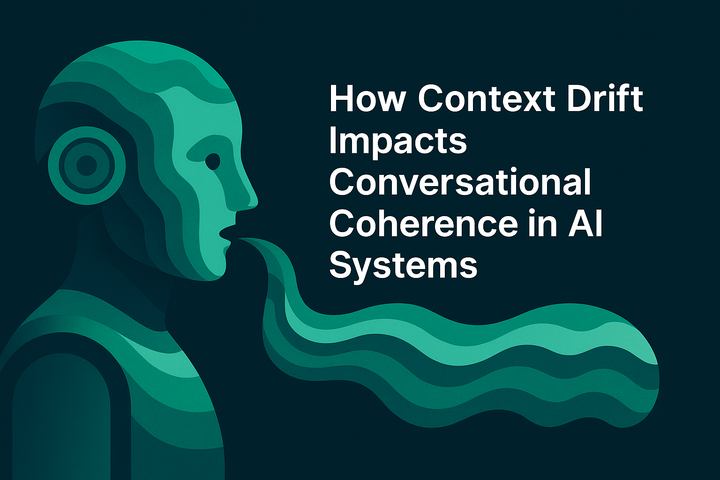Improving AI Agent Reliability with Maxim AI

Reliable AI Agents requires rigorous evaluation, observability, and operational safeguards at every layer of the stack, from prompt engineering and RAG pipelines to orchestration and gateways. This article lays out a practical approach to AI reliability, anchored by industry standards and implemented end-to-end with Maxim AI’s evaluation, simulation, and observability platform, plus the Bifrost LLM gateway.
Why AI Agent Reliability Is Hard
Modern agents are non-deterministic systems governed by prompts, context retrieval, tool usage, and model parameters. They can drift, fail silently, or hallucinate. Evaluating and monitoring them is not a single metric problem; it’s an end-to-end process.
- Agents can produce plausible but nonfactual answers; the literature on LLM hallucinations underscores the need for systematic detection and mitigation. See the comprehensive overview in the paper, A Survey on Hallucination in Large Language Models.
- Retrieval-Augmented Generation (RAG) introduces a dual failure surface: retrieval quality and generation faithfulness. Evaluations must measure relevance, accuracy, and faithfulness across both components. See Evaluation of Retrieval-Augmented Generation: A Survey and the updated synthesis Retrieval Augmented Generation Evaluation in the Era of Large Language Models: A Comprehensive Survey.
- LLM-as-a-judge is useful but has reliability limits; single-shot judgments are stochastic, and judges can be biased or sensitive to verbosity. See Can You Trust LLM Judgments? Reliability of LLM-as-a-Judge and the discussion in Detecting hallucinations in large language models.
A robust reliability strategy spans pre-release experimentation and simulation, quantitative and human-in-the-loop evaluation, and production observability with distributed tracing. That strategy should align to widely-accepted risk frameworks for trustworthy AI, such as NIST’s functions of Govern, Map, Measure, and Manage in the NIST AI Risk Management Framework.
A Lifecycle Model for Trustworthy AI Agents
Reliability emerges when teams treat agent quality as a lifecycle: design evaluable behaviors, simulate realistic scenarios, measure with transparent metrics, and monitor in production with trace-level fidelity. Maxim AI’s platform implements this lifecycle with an integrated stack.
1) Experimentation and Prompt Engineering
Agents begin with well-structured prompts and parameter choices. When teams iterate in isolation, hidden regressions creep in. Maxim’s Playground++ centralizes experimentation, versioning, and deployment:
- Organize and version prompts with side-by-side comparisons for output quality, cost, and latency across models and parameters. [Experimentation]
- Connect to databases and RAG pipelines to evaluate prompts in realistic contexts rather than synthetic sandboxes. [Experimentation]
This stage sets up consistent baselines, with artifacts captured for downstream evaluation and observability.
2) Simulation Across Scenarios and Personas
Pre-release reliability depends on exposing agents to diverse, realistic trajectories. Maxim’s Agent Simulation & Evaluation lets teams run hundreds of scenario-driven conversations and tasks:
- Simulate multi-turn interactions, measure task completion, and identify failure points across the agent’s path. Learn more at Agent Simulation & Evaluation.
- Re-run simulations from any step to reproduce issues and trace root cause, e.g., faulty retrieval, brittle prompt, or tool invocation errors, before any user ever sees them. See how this works on Agent Simulation & Evaluation.
Simulations produce high-quality test suites that feed quantitative evals and future regressions.
3) Unified Evaluation: Machine, Statistical, and Human
Reliable agents need quantitative signals and qualitative judgment. Maxim provides a unified evaluation framework:
- Use out-of-the-box evaluators or define custom evaluators for correctness, faithfulness, context adherence, and structured-format guarantees. See details on Agent Simulation & Evaluation.
- Combine statistical metrics with LLM-as-a-judge and human annotation to mitigate single-method bias. For context, the RAG surveys detail metrics from retrieval relevance to generation faithfulness: Evaluation of Retrieval-Augmented Generation: A Survey and RAG Evaluation in the LLM Era.
- Run evaluation suites across prompt/model versions and trace regressions. Build confidence by capturing both offline benchmarks and online, in-production evals using Maxim’s observability suite at Agent Observability.
Given the known limitations of LLM-as-a-judge reliability, treat judge scores as one layer in an ensemble with deterministic checks (e.g., schema validation), reference-based scoring when applicable, and targeted human review for nuanced domains. See the reliability discussion in Can You Trust LLM Judgments?.
4) Observability and Distributed Tracing in Production
Production reliability depends on continuous visibility. Traditional monitoring misses agent-specific signals. Maxim’s observability captures AI-native telemetry:
- Distributed tracing for AI workflows: log sessions, traces, spans, generations, retrievals, tool calls, errors, and user feedback. This enables end-to-end root cause analysis. Read the overview in LLM Observability: How to Monitor Large Language Models in Production.
- RAG tracing connects retrieval queries and document contexts to downstream completions, enabling faithfulness checks and hallucination detection in logs. Explore observability-driven development in Using Distributed Tracing to Build Better Multi-Agent Systems.
- Automated online evals run on production traces to catch quality drift and regressions quickly. See quality monitoring capabilities on Agent Observability.
Maxim’s observability suite aligns with trustworthy AI principles by providing traceable, auditable evidence across the AI lifecycle, consistent with the “Measure” and “Manage” functions from the NIST AI Risk Management Framework.
Reliability for Voice Agents and Multimodal Workflows
Voice agents add latency sensitivity, transcription errors, and multi-turn state challenges. Reliability requires voice-specific observability:
- Instrument voice tracing across ASR transcripts, intent classification, and tool calls to capture source errors and downstream impact.
- Combine voice evals (e.g., intent accuracy, task success) with human-in-the-loop checks for naturalness and clarity where automated metrics are insufficient.
For multimodal agents (text, images, audio), Maxim’s Data Engine simplifies dataset curation and enrichment, feeding sustained improvement cycles:
- Import and manage multimodal datasets, curate from production logs, and enrich via labeling. See data management capabilities in the platform overview.
Operational Reliability with Bifrost (LLM Gateway)
The reliability of agent behavior also depends on gateway-level controls: failover, routing, caching, and governance. Maxim’s Bifrost provides a high-performance, OpenAI-compatible gateway unifying 12+ providers:
- Maintain uptime with Automatic Fallbacks across providers and models to absorb outages and rate limit spikes. Read the feature overview at Automatic Fallbacks.
- Reduce latency and cost with Semantic Caching, which reuses responses for semantically similar inputs. See implementation details at Semantic Caching.
- Balance workloads via Load Balancing with intelligent distribution across keys/providers. Learn more under Load Balancing.
- Strengthen operational safeguards with Governance (usage tracking, rate limiting, access control), Budget Management, and SSO. Explore features at Governance, Budget Management, and SSO Integration.
- Extend capabilities via Model Context Protocol (MCP) to enable tool use across filesystems, web search, and databases. Read about MCP at Model Context Protocol (MCP).
- Accelerate integration with Unified Interface (OpenAI-compatible), Zero-Config Startup, and Drop-in Replacement. See the quickstart at Zero-Config Startup and Drop-in Replacement.
When combined with Maxim’s observability, Bifrost’s controls materially improve production reliability by reducing single points of failure, throttling risky workloads, and enforcing guardrails.
Putting It All Together: Ensuring Reliability
Use this practical implementation to build reliable agents and keep them reliable:
- Design evaluable agents
- Start with prompts and workflows that have measurable success criteria (task completion, faithfulness, context adherence). Use Playground++ for prompt versioning, comparisons, and deployment at Experimentation.
- Simulate realistically, then codify tests
- Build scenario suites that represent real user personas and edge cases. Re-run simulations from failure steps to reproduce defects. Leverage Agent Simulation & Evaluation.
- Evaluate with layered methods
- Combine statistical metrics, LLM-as-a-judge (with caveats), and human reviews. Use reference-based scoring where ground truths exist; enforce schema and policy rules deterministically. See framework on Agent Simulation & Evaluation and reliability context in Can You Trust LLM Judgments?.
- Instrument observability before launch
- Capture traces spanning sessions, spans, retrievals, tool calls, and feedback. Turn on online evals against production logs and alerts on drift. Read how Maxim implements LLM Observability at Agent Observability and the guide LLM Observability in Production.
- Harden operations with a gateway
- Configure multi-provider routing, fallbacks, load balancing, caching, and governance. Start with Bifrost’s OpenAI-compatible API at Unified Interface and deploy quickly via Zero-Config Startup.
- Continuously curate data
- Evolve datasets from production traces and feedback. Use the Data Engine to enrich and split data for targeted evaluations and re-training, integrated with observability at Agent Observability.
- Align to trustworthy AI standards
- Document your Govern/Map/Measure/Manage practices and trace evidence. Reference the NIST AI Risk Management Framework for program-level accountability.
Where Maxim AI Stands Out
- Full-stack multimodal coverage: experimentation, simulation, evaluations, observability, data curation, and gateway operations, one platform, one ontology across traces and evals. See the capabilities at Experimentation, Agent Simulation & Evaluation, and Agent Observability.
- Built for cross-functional velocity: engineers get SDKs and tracing; product teams get no-code eval configuration and custom dashboards; QA/SRE get alerts, reporting, and governance.
- Practical reliability tooling: deterministic evaluators alongside LLM-as-a-judge; distributed tracing that reconstructs agent trajectories; online evals and alerts on logs; and an enterprise-grade gateway with failover and budgets via Bifrost Governance.
Conclusion
Improving AI agent reliability is not a single tool or metric. It is a lifecycle and an operating system for quality. Maxim AI provides the unified platform to implement that lifecycle (experiment, simulate, evaluate, and observe) while Bifrost ensures operational resilience as the gateway. Grounding your program in standards like NIST AI RMF and layering ensemble evaluations over robust tracing gives teams the confidence to ship agents that stay reliable as they scale.
Ready to see it in action? Book a walkthrough at Maxim Demo or start with Sign up.


